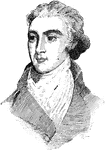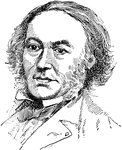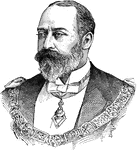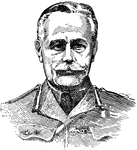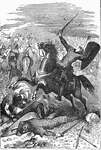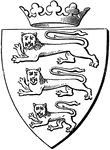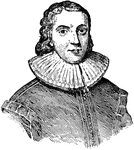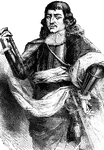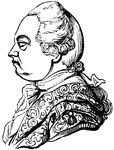
Westminster Abbey
A large church in Westminster, London, England, located just to the west of the Palace of Westminster.…

Monogram of John Baret
"In the church of St. Mary, at Bury St. Edmunds, the ceiling of the eastern compartment of the south…
Lord Beaconsfield
Also known as Benjamin Disraeli. He was the Prime Minister of the United Kingdom from 1874 to 1880.

A London Bellman
"It was part of the duties of a bellman, or night-watchman, to call out the hours, the state of the…
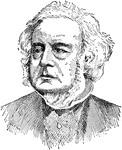
John Bright
A British statesman who helped form the Anti-Corn Law League. He also sat in the House of Commons from…

Chillingham Bull
A rare breed of cattle that live in a large enclosed part at Chillingham Castle in England.

Caerphilly Castle
Caerphilly Castle is a Norman castle that dominates the centre of the town of Caerphilly in south Wales.…

Silver Crown of Charles II
The silver crown coin of Charles II, who was the King of England between 1649 and 1651.

William Pitt, Earl of Chatham
The 1st Earl of Chatham who led Britain during the Seven Years' War. He was the Prime Minister between…

Monkwearmouth Church
Monkwearmouth is an area of Sunderland located at the north side of the mouth of the River Wear. It…
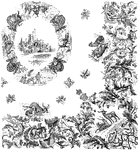
Table Cloth
This table cloth is was made for the Queen Victoria of the United Kingdom. It has scenery of deer stalking,…

Interior of the House of Commons
"The narrow room in which the House of Commons holds its sessions contains seats for less than 350 of…

Thomas Cranmer
Thomas Cranmer (2 July 1489 – 21 March 1556) was a leader of the English Reformation and Archbishop…

The Last Crusade
"Richard I (looking down on the Holy City): 'My dream comes true.' A cartoon which appeared in Punch,…
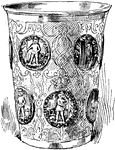
Medal Cup
An illustration of a "silver Medal-cup (The medals are all of the Duke of Brunswick-Wolfenbuttel.)"…
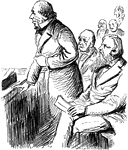
Benjamin Disraeli
Benjamin Disraeli, 1st Earl of Beaconsfield, (21 December 1804 – 19 April 1881), was a British Conservative…
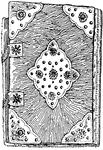
Domesday Book
The Domesday or Book of Winchester was a survey or census of England completed in 1086 for William the…
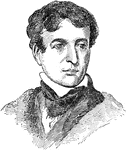
Earl of Durham
A title of Peerage of the United Kingdom, created for the prominent Whig politician John Lambton. He…
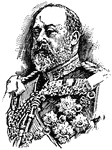
Edward VII
(1841-1910) King of the United Kingdom during 1901-1910. The eldest son of Queen Victoria
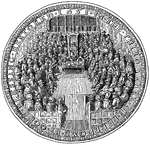
Great Seal of England Under the Commonwealth
The seal used to symbolize the monarch's approval of important state documents.

Fourpenny Piece of Queen Victoria
The obverse and reverse sides of the fourpenny piece, or groat, an English silver coin worth fourpence.

Piers Gaveston
Piers Gaveston, 1st Earl of Cornwall (c. 1284 – 19 June 1312) was the favorite, and possibly lover,…
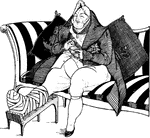
George IV
George IV or George Augustus Frederick (12 August 1762 – 26 June 1830) was king of the United…
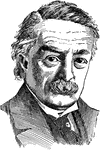
David Lloyd George
The Prime Minister of the United Kingdom from 1916 to 1922 and Leader of the Liberal Party from 1926…

Gibraltar
"Though not an island, Gibraltar is connected with the Spanish mainland only by a flat strip of sandy…

Harlech Castle
Harlech Castle, located in Harlech, Gwynedd, Wales, is a concentric castle, constructed atop a cliff…

The Island of St. Helena
An island located in the southern Atlantic Ocean. It is currently part of the British overseas territory.…
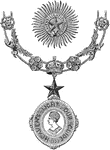
Insignia of the Order of the Star of India
"This Order was instituted by Her Majesty the Queen, in the year 1861, for bestowing honor upon the…
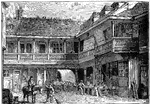
Tabard Inn
The Tabard, an inn that stood on the east side of Borough High Street in Southwark, was established…

Gold Coin of James I
A gold coin of King James I. It was the first coin to bear the name 'Great Britain.'

The Nelson Monument
"A granite Corinthian column, 145 feet high, surmounted by a statue of Nelson, 16 feet high. On the…

Sir Thomas More
Sir Thomas More (7 February 1478 – 6 July 1535) was an English lawyer, author, and statesman who…
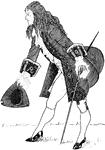
Beau Nash
Beau Nash (18 October 1674 - 3 February 1762), born Richard Nash, was a celebrated dandy and leader…
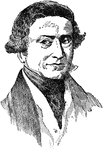
Sir Robert Peel
The Prime Minister of the United Kingdom from 1834 to 1835, and again from 1841 to 1846.

William Pitt the Younger
The youngest prime minister of Great Britain, serving from 1783 to 1801, and again from 1804 to 1806.



